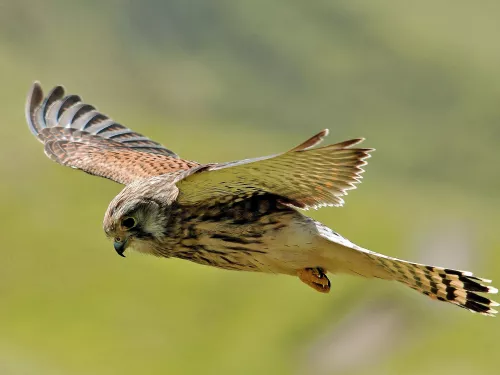Hybrid black poplar
The Hybrid black poplar is a variety of our wild Black poplar that can be seen along riversides, roadsides and in parks. Used for ornamental planting and timber, it has become naturalised in the UK.
The Hybrid black poplar is a variety of our wild Black poplar that can be seen along riversides, roadsides and in parks. Used for ornamental planting and timber, it has become naturalised in the UK.
Ivy is one of our most familiar plants, seen climbing up trees, walls, and along the ground, almost anywhere. It is a great provider of food and shelter for all kinds of animals, from butterflies to bats.
The Ivy Bee is a new arrival to the UK. First recorded here in 2001, it is slowly spreading north. It feeds exclusively on the nectar of Ivy flowers and can be seen in autumn when this plant is in bloom.
Ivy-leaved toadflax is an introduced species in the UK that has become widely naturalised. Look for creeping along old walls and pavements, and shingle beaches. Its flowers resemble those of snapdragons.
This well-camouflaged wader is a winter visitor to the UK, where it can be seen feeding on wetlands with a distinctive bobbing motion.
The jackdaw is a small, black-capped crow of woodlands, parks, towns and coast. It is a well-known thief, stealing other birds' eggs and breaking into garden feeders.
Introduced from Japan in the 19th century, Japanese knotweed is now an invasive non-native plant of many riverbanks, waste grounds and roadside verges, where it prevents native species from growing.
The jay is a colourful member of the crow family, with brilliant blue wing patches. It is famous for searching out acorns in autumnal woodlands and parks, often storing them for the winter ahead.
It's easy to see where the jewel anemone got its name - the tiny colourful blobs that tip its tentacles look like jewels! Forming dense, colourful carpets on rocky overhangs, jewel anemones are one of the UK's most beautiful underwater sights.
The Keeled skimmer is a dragonfly of heaths and commons with shallow pools. It has a skittish and weak flight, and is on the wing in summer and early autumn.

The kestrel is a familiar sight hovering over the side of the road, looking out for its favourite food: small mammals like field voles. It prefers open habitats like grassland, farmland and heathland, but can be seen in towns and villages.
Found on rocky shores and seabeds, the Keyhole limpet gets its name from the little hole at the tip of its shell.